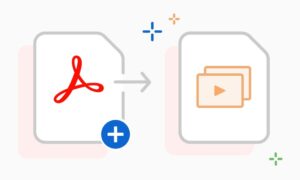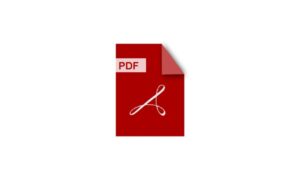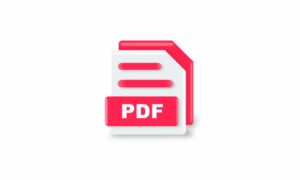Straightforward Document Management: PDF stands for “Portable Document Format”, and you can explore the history behind this particular sort of file here. Basically, the idea behind PDFs was to make it very simple for big documents to be shared between diverse operating systems. Windows and Apple devices have no trouble with PDFs, and neither do Android or iOS devices.
PDFs are easy to read, and for the most part, once you’ve made a document into one, it’s unchangeable. Well, over time, it was realized that annotation options needed to be available no PDFs for reasons of convenience, among other things. When you can digitally “sign” a legal document presented to you via PDF, that’s a lot easier than printing it off.
Accordingly, there’s now a bit of a market in software solutions designed to interact with and alter PDFs; from programs that can scan a PDF document for text to copy-paste it into a text window on a smartphone, to annotations, there are many options here. You can learn more about PDF Annotations at the link.
Here we’ll explore annotations in more detail to give you an idea of what they are, how they work, and the sort of applications they may have for you.
Mimicking What You Can Do in Word Processing Software
With Microsoft Word, you can make notations in different colored text, highlight portions of text, and more. Annotations for PDFs essentially make it possible for you to do many of the same things right in the PDF document. Such annotations are “mapped” over the primary document.
So if you’ve sent in a copy of a novel via PDF destined to be a “galley” copy, editors can mark the document up without altering its original form using annotations. Similarly, for artwork or other documents that might be sent via PDF, notes can be added to the document without corrupting it.
One area where this is especially important is as regards ad proofing. A compliance review is another area where PDF annotation comes in handy. If you’ve got a magazine that’s about to go to press, PDF annotation makes it easy for an editor to catch little issues, then send the document back for revision conveniently.
Without the annotation, you’d have to copy-paste the whole document into a word-processing format, which would remove all the formatting. Accordingly, any notes added to a copy-pasted document would be “out of sequence” with the rest. In the PDF, annotation puts the notes right where you intend them to be, making life easier for everybody.
How PDF Annotation Works
PDF annotation uses a concept similar to photoshop. Basically, with photoshop, you’ve got “layers” which are added “over” an “underlying” document. So if you’ve got a picture, and you add some alteration, that’s a “layer” which is “on top” of the image.
Annotation is similar. You’ve got another digital layer that can be added or removed as necessary, leaving the document beneath in its original form.
Making Full Use of PDF Annotation
With PDF annotation, you’ve got the potential to cut out a lot of static from operations. Instead of copy-pasting an entire document into a preferred word processing document, you just mark up the document as though you had a pen on physical paper. Only, digitally, you don’t need a printer, paper, or ink. You can just send the doc digitally, it’ll be marked up, then returned.
If you’re looking for a straightforward way to consolidate operational capabilities across your business without having to spend a lot on new equipment, working with PDF annotation software is a good move. It allows everybody on any device to work with or alter documents without corrupting them.



































